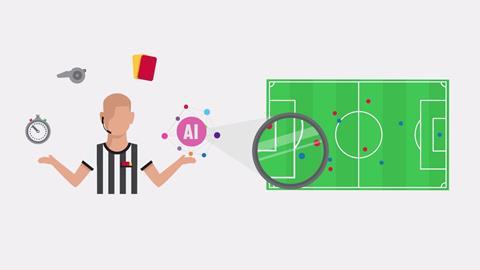Sports tech giant suggests numerous potential uses for Artificial Intelligence (AI) in increasing the speed and accuracy of VAR

AI could have a number of useful applications in VAR, according to EVS in its just-released white paper When VAR meets AI. These include controlling automated dedicated robotic VAR cameras that surround the field of play, offering a detailed view of any disputed incident from a variety of angles.
Olivier Barnich, engineering manager at EVS, said: “There are real-world applications [for AI] that we are currently developing for live sports productions. Some of which could benefit VAR, such as automated camera selection and automated robotic camera steering.”
With automated robotic camera steering, AI is trained to locate the action and to steer each robotic camera to what it thinks is the most relevant part of the field of play.
These dedicated VAR cameras could therefore be used to show the most appropriate viewpoints intended for VAR analysis, says Barnich.
“If we apply this technique to VAR usage, we can imagine AI/machine learning detecting incidents on the field and suggesting the right camera angles to be reviewed by VAR. This would help speed up the decision-making process, as the VAR assistant would have a reduced number of camera angles to choose from,” he said.
Another aspect of VAR that would benefit from AI is to “augment and enhance the decision-making process for referees by facilitating the identification of offside offences,” says Barnich. “This is a new generation of VAR system that uses this neural-network technique to automatically calibrate the field of play and to produce an offside line with a three-dimensional component from multiple viewing angles.”
“The AI performs a continuous analysis of the images generated by the broadcast cameras in real-time and calculates the transformation between the camera image and the 3D model of the field, allowing the offside line to be displayed in augmented reality at any moment and with the right perspective. It eliminates the need for tedious and time-consuming manual calibration. With AI, the offside line is generated in less than a second.”
“The potential of AI is huge, and our teams are looking forward to being part of this journey towards smarter and more effective live production” said Barnich.






























No comments yet